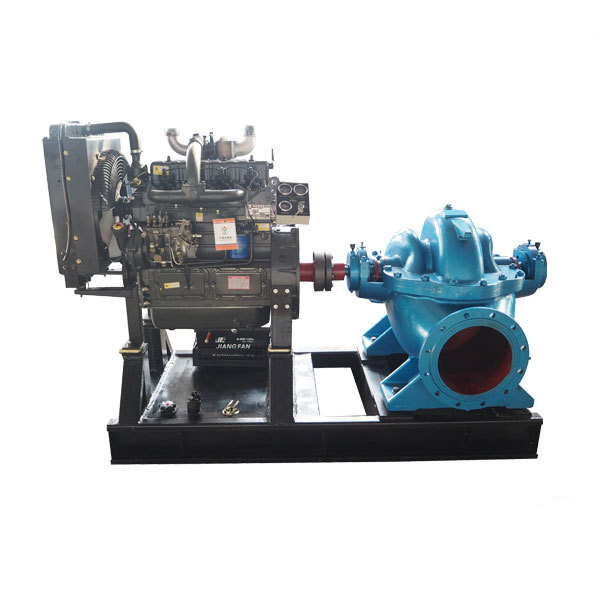The low-speed self-checking method of diesel driven pump does not require any changes to the pipeline, but it only detects a stage in the normal working condition of the pump. The fire pump can be divided into direct start and indirect start, and the higher power requires indirect start. The indirect start has Y/△ step-down start, auto-coupling step-down start, soft starter start and so on. In the operation of the fire pump, the start of the soft starter is only an early stage of operation, and then it is normal operation. The frequency conversion method also failed to run to the power frequency stage. But for preventing the rust of the pump, the low-speed self-checking method still has a certain effect. It has the characteristics of low-frequency drive, low-speed rotation, and low-power operation of the equipment.

The normal-speed self-check mode simulates the actual working conditions of the fire-fighting water supply within a certain period of time, and it detects the whole process of the fire-fighting pump starting and normal operation. The pipeline design needs to be improved. It is important to prevent the solenoid valve on the bypass pipeline from malfunctioning. It must be opened during the self-inspection and closed in time after the self-inspection is completed.
In the self-check mode, both the normal-speed self-check mode and the low-speed self-check mode play a certain role in the maintenance of the fire pump. From the perspective of maintenance and management, they can all be used in the fire water supply system. Relatively speaking, the normal speed self-check mode can reflect the actual operating conditions of the pump. From the perspective of the cause of the pump failure, the failure caused by long-term use is mainly the seizure of the pump unit shaft. There are fewer problems in the working conditions of incomplete starting of the motor, so it is not very meaningful to overemphasize the operation of the fire pump in complete working conditions. The normal-speed self-checking method is suitable for the situation where the fire pump sucks water from the fire pool. Reasonable consideration should be given to the layout of the pipeline in the design. There are certain problems in operation, which can quickly cause overpressure, which is not very suitable for engineering applications. The normal-speed self-inspection method and the low-speed self-inspection method have their own characteristics. Although the low-speed self-inspection method is not comprehensive for the operation and inspection conditions of the fire pump, it has no special requirements for the design of the pipeline and can basically be applied to the self-inspection Technical requirements, it is more suitable for the pump to directly suck water from the municipal pipe network.
Regular self-checking work can reduce the probability of pump breakage. The general reasons for breakage are as follows:
1. The diesel driven pump has been in a humid environment for a long time, and corrosion occurs everywhere, and the pump shaft is no exception; or, the long-term transported liquid is extremely corrosive and the pump shaft material does not use the corresponding corrosion-resistant pump shaft material. This leads to fractures after corrosion.
2. The pump shaft castings are not precise enough, causing the pump shaft to break.
3. Excessively hard objects are sucked into the pump and cause the impeller to jam, and some small pump shafts are thin and will break.
4. The heat treatment of the fire pump shaft is not in place, causing the pump shaft to break.
5. The pump shafts of some fire pumps need to be welded. During the welding process, the process is not in place, which leads to cracks in the weld.